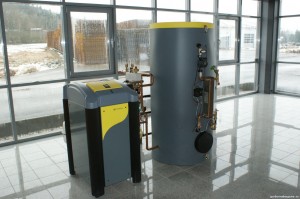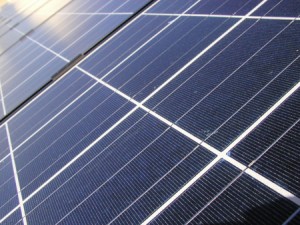Geothermal vs Solar
Estimates show that 9 out of 10 people have a basic understanding of solar panels, but only 1 of 10 know about geothermal heat pumps. Both provide great alternative energy solutions, both reduce utility bills, and both harness the power of the sun so why such the disparity?
Now you may be thinking, what do you mean both harness the power of the sun, doesn’t geo mean ground? Yes geo means ground and no, I’m not crazy. Geothermal heat pumps take advantage of the solar heat stored by the ground. The temperature a few feet below the earth’s surface is able to remain a constant ~55 degrees because it absorbs and traps the heat from the sun.
So the question is, which is the right alternative energy solution for your, GeoExchange or solar panels? Now there are a number of factors that will contribute to how effective each method of heating and cooling is going to be and this is just a brief overview.
Functionality
A ground source heat pump wins out when it comes to broad-based functionality.
An important benefit of ground source heat pumps is that they are functional in any climate. The temperature just below the earth’s surface ranges from 45-65 degrees regardless of where you are. Solar panels on the other hand, have varying efficiencies based on climate. In the Southwest part of the United States, there are approximately 300 sunny days a year making solar panels a good investment, however in the Northeast cloudless skies occur only 50% of the time. The limited number of cloudless days will greatly decrease the efficiency of solar panels
Also, a single geothermal heat pump can provide enough air supply to heat and cool even a larger home. In contrast, solar panels are primarily used to supply electricity but if you choose to use them to heat and cool your home the number of panels you need to install increases exponentially. It would require a great deal of space to install enough solar panels to heat and cool a home.
The biggest knock on a geothermal heat pump in regards to functionality is the installation process. If you are building a new home, no problem; install the heat pump during the construction and you don’t have to worry about tearing up your yard. If you are retrofitting an older home with a geothermal heat pump then you do have to deal with landscaping after your yard has been dug up.
Costs
Costs are obviously on the forefront of everyone’s mind when it comes to installing a new energy system. The primary thing that you need to consider is the purpose of your new system. Is it for electricity or heating and cooling?
If you are simply looking for a new source of electric, solar panels are the way to go. However, if you are looking to heat and cool your home in an efficient and eco-friendly manner geothermal heat pumps are for you.
Both geothermal and solar panels have high up front costs with long-term paybacks. The upfront costs for solar panels are going to be extremely high if you plan to use the panels for heating and cooling. The costs are going to vary from house to house so contact a qualified installer for more specific cost benefits.






















Thank you for sharing this. I’m always looking for smart resources to share with clients and my colleagues, and this post is definitely worth sharing!